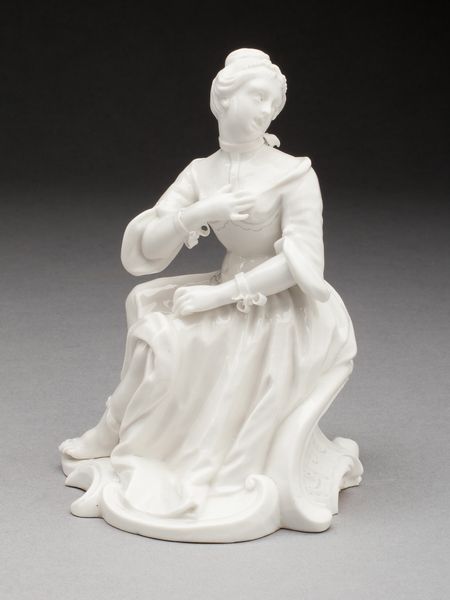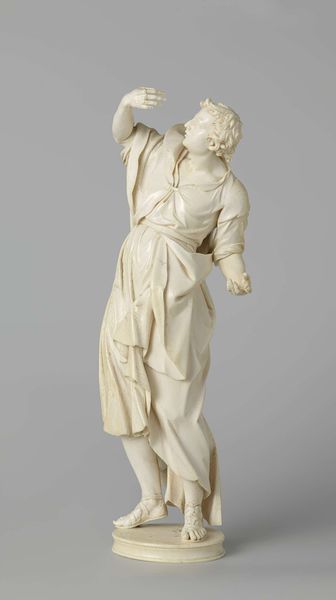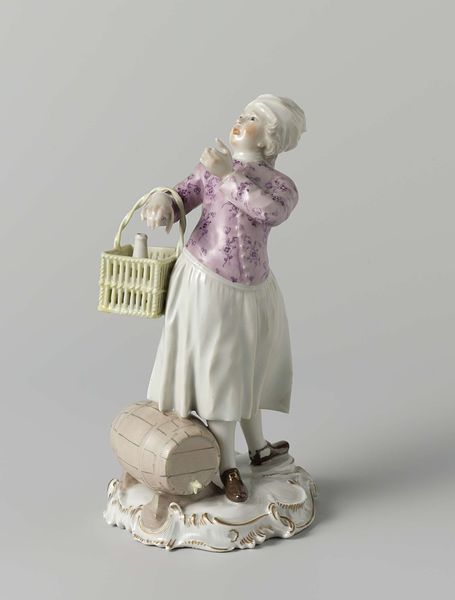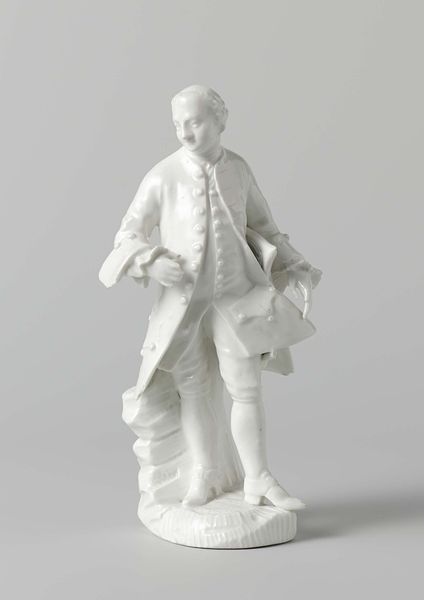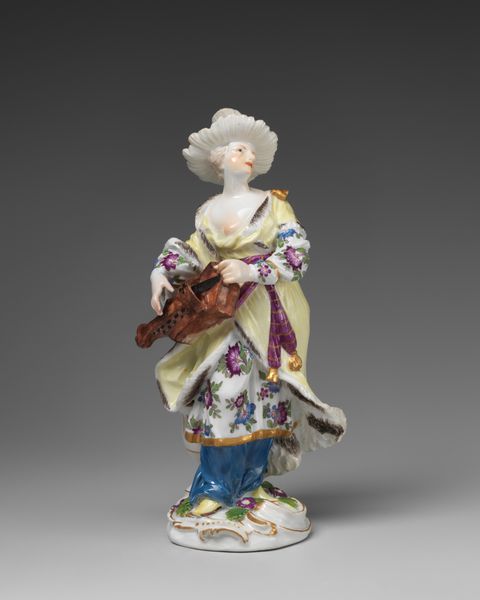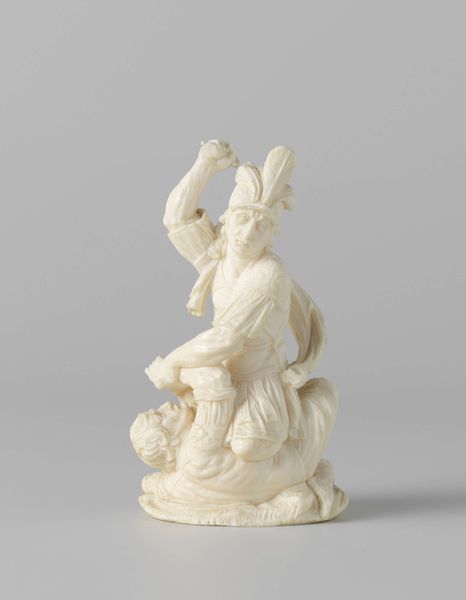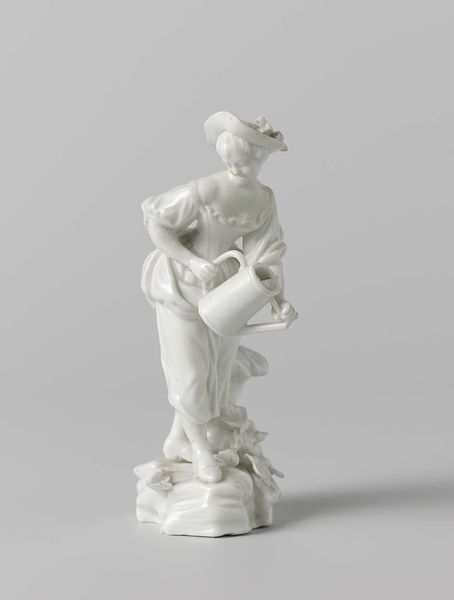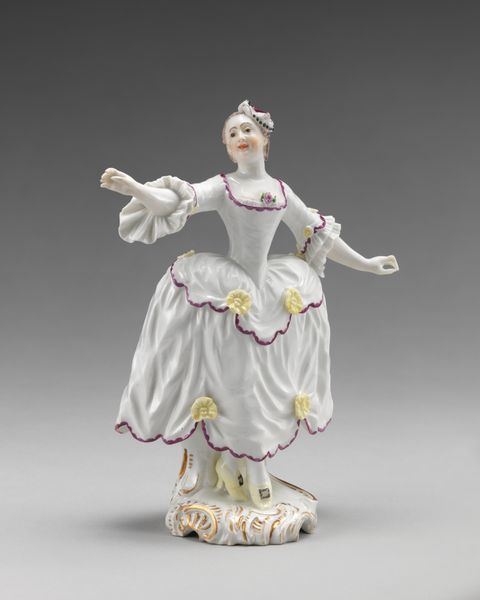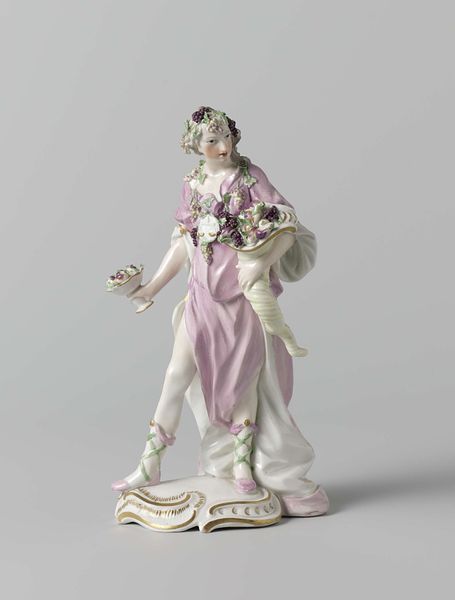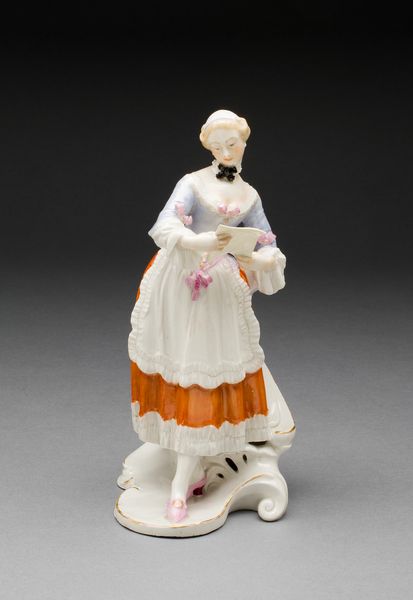
porcelain, sculpture
#
portrait
#
porcelain
#
sculptural image
#
figuration
#
sculpture
#
genre-painting
#
rococo
Dimensions: height 18 cm, width 8.4 cm, depth 5.9 cm
Copyright: Rijks Museum: Open Domain
This small porcelain figure of a lady was made in Berlin by Wilhelm Caspar Wegely, sometime in the mid-18th century. The smooth, white, almost translucent quality of the porcelain gives the figure an ethereal appearance. The material is crucial here. Porcelain was a highly prized, cutting-edge material at the time. Its production was a complex, laborious, alchemical process, which explains why it was known as ‘white gold.’ The figure was cast in a mold, which allowed for a degree of standardization, and then embellished with hand-applied details, such as the delicate lace trim on her shawl. But porcelain figures like this weren’t just about showing off technical prowess. They were also about displaying wealth and status, and participating in a culture of conspicuous consumption. Ultimately, it’s a reminder that even seemingly delicate objects like this are deeply embedded in social and economic structures. By considering its making, we can move beyond appreciating its beauty to understanding its broader significance.
Comments
No comments
Be the first to comment and join the conversation on the ultimate creative platform.
